1. Speedy Gonzales
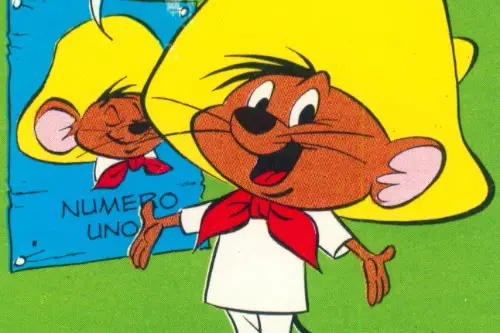
Speedy Gonzales, the famous Mexican mouse, was a staple of Looney Tunes cartoons for decades, but his presence became controversial in the 1980s. The character, known for his fast-running abilities and Spanish accent, was seen as perpetuating offensive stereotypes about Mexicans. Critics argued that his portrayal was a reductive caricature of Mexican culture, especially during a time when TV networks were becoming more conscious of representation. As a result, Speedy’s appearances were significantly reduced, and he was practically erased from the mainstream media for a period.
However, Speedy had his defenders who argued that the character was more of a positive figure—he was the “fastest” and always outsmarted his enemies, including the villainous Sylvester the Cat. In recent years, some fans have called for his return, with a more nuanced approach to his character. There’s been some reconsideration of Speedy as a cultural icon, especially in light of the increasing focus on diversity in media. Nevertheless, his original version remains absent from many modern iterations of Looney Tunes.
2. Johnny Quest’s Racebannon
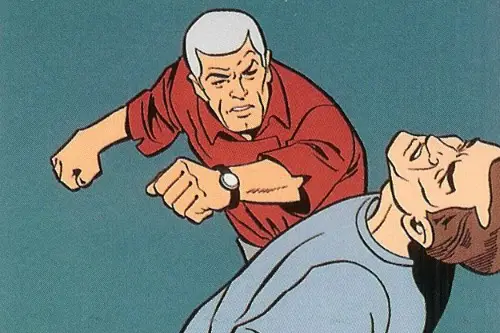
Race Bannon, a key character in the original Jonny Quest series from the 1960s, was a heroic and stoic figure, who served as Jonny’s protector and mentor. However, in later adaptations, Race Bannon was quietly phased out or replaced by more politically correct characters. The original depiction of Race was a reflection of Cold War-era sensibilities, often showing him as the quintessential “stoic hero” figure, but also reinforcing certain stereotypes of masculinity. The shift to more inclusive, contemporary shows led to the subtle disappearance of Race Bannon from future Jonny Quest series.
In the rebooted The Real Adventures of Jonny Quest (1996), Race Bannon’s role was minimized, and new characters were brought in to reflect a more diverse cast. The evolution of characters like Hadji, who was originally depicted with more stereotypical traits, symbolized a shift toward representation, but it also left Race’s character somewhat outdated in terms of modern sensibilities. This change reflected a broader trend in the animation industry, where the portrayal of masculinity and race was undergoing a transformation. As a result, Race Bannon’s character was sidelined, and his role became less prominent.
3. Pepe Le Pew
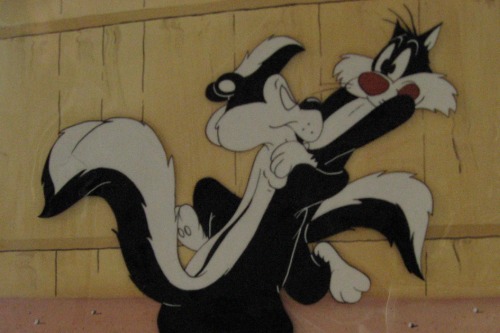
Pepe Le Pew, the amorous skunk from the Looney Tunes series, was once a beloved character, but in recent years, his inclusion in media has been quietly erased. His entire persona revolved around relentlessly pursuing his love interest, often through non-consensual means, making his behavior seem charming in a time when such actions were viewed more lightly. However, as societal attitudes toward consent and harassment have evolved, the character became increasingly seen as problematic. Many parents and critics raised concerns that Pepe’s behavior could send the wrong message to children about relationships and boundaries.
In 2021, when Pepe was slated to appear in Space Jam: A New Legacy, his character was notably cut from the final version of the film. This was widely seen as a reflection of how modern audiences are reevaluating the portrayal of relationships and gender dynamics in classic media. Pepe’s removal highlights a growing trend where characters whose behaviors no longer align with contemporary values are quietly erased from newer content. While the skunk remains a nostalgic figure for some, his behavior is now seen as outdated and inappropriate for modern entertainment aimed at younger viewers.
4. Minerva Mink
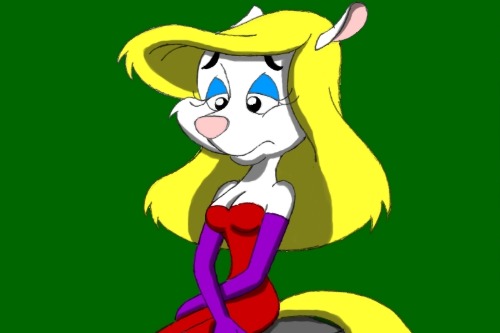
Minerva Mink, a character from Animaniacs, was one of the few female characters in the series, but she was largely absent from the later seasons. She was a glamorous, confident, and flirty character who often used her looks to her advantage, but over time, the character was quietly sidelined. Minerva was not necessarily erased for being offensive, but her overtly sexualized nature didn’t align with the direction of more modern, family-friendly content. As Animaniacs evolved, the character was phased out in favor of more socially responsible and less provocative characters.
Her absence from later seasons and from the rebooted series in 2020 highlights the changing landscape of children’s television. The character, while popular at the time for her comedic role, was seen by some as reinforcing dated gender stereotypes that were no longer as widely accepted. In an era where diversity and representation are increasingly prioritized, Minerva Mink’s style of humor just didn’t fit. Her absence from modern adaptations of Animaniacs shows how cultural shifts often lead to the erasure of characters who once pushed the envelope.
5. Franklin (from Peanuts)
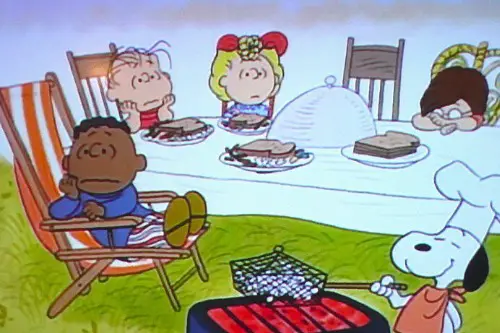
Franklin, one of the few African American characters in the Peanuts universe, was introduced in 1968 by Charles Schulz. While the character was groundbreaking at the time, Franklin was sometimes pushed into the background in later adaptations of the Peanuts cartoons. His quiet erasure can be attributed to a mix of changing societal views and the discomfort some viewers had with the inclusion of a Black character in a predominantly white group. For years, Franklin appeared in only a handful of Peanuts specials and comics, and his character didn’t receive much development.
However, Franklin’s erasure from later Peanuts media wasn’t due to explicit racism but more to do with the way the character was integrated. In more recent years, Franklin has been brought back into the fold, but it wasn’t until the Peanuts Movie in 2015 that the character was fully reintegrated into the group. His original, underdeveloped role highlights the slow pace at which diverse representation was introduced into mainstream animated content. While he hasn’t been fully erased, Franklin’s history in Peanuts reveals how cultural shifts influenced the inclusion of Black characters in animation.
6. The Fonz (from Happy Days cartoons)
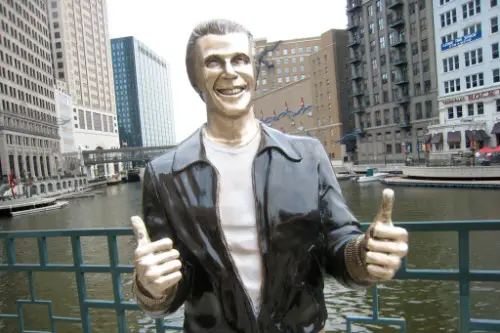
In the Happy Days spinoff cartoon series, The Fonz was initially portrayed as a key character, continuing the legacy of his popular TV persona. However, as the show went on, the character was gradually phased out of the animated versions, likely because the more slapstick nature of the cartoons didn’t match his cool, tough guy persona. The shift from live-action to animation created challenges for translating the iconic Fonz character into a cartoon without losing his charm. Eventually, The Fonz’s role became less central, and his appearances dwindled.
The character’s disappearance can also be seen as part of a broader shift in how “cool” characters were portrayed in children’s media. The need for characters that could appeal to kids in an accessible way led to a move away from the more adult-driven, edgy characters like The Fonz. While The Fonz may have been a major influence on TV culture at the time, his animated version did not have the same lasting appeal. As a result, he was quietly erased from the cartoon spinoffs, despite being a staple of Happy Days.
7. Cartman’s Mom (from South Park)
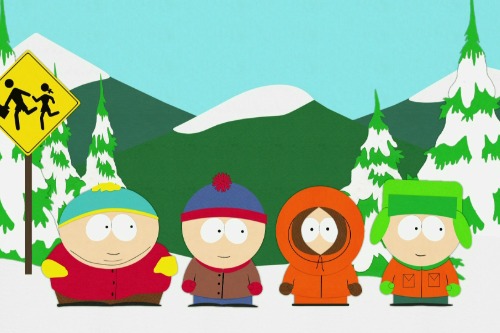
South Park has always pushed boundaries with its satirical humor, but one of the characters who has been quietly erased over the years is Cartman’s mom, Liane Cartman. While she played a significant role in earlier seasons, her character arc gradually became less central as the show evolved. One of the primary reasons for her diminished presence could be the shifting focus on more outrageous and controversial characters, like Cartman himself, whose over-the-top antics became the focal point. As a result, Liane’s role in the series became less defined, and she was often written off as a secondary, background character.
The subtle erasure of Liane Cartman also reflects how South Park has prioritized edgy humor at the expense of character development. Her complex relationship with Eric Cartman was often overlooked in favor of more shocking storylines. Liane’s role in shaping Cartman’s character, which was once a major plot device, became secondary as the series focused more on societal issues and political satire. The decision to phase her out might have been influenced by the desire to keep the show’s humor as biting and direct as possible.
8. The Smurfs’ Vanity Smurf
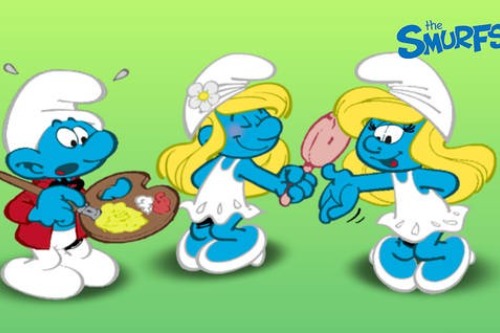
While Vanity Smurf was a key part of The Smurfs in the 1980s, his character was noticeably toned down in later adaptations. Originally, Vanity was portrayed as a self-absorbed character obsessed with his appearance and mirrors. As the series progressed, his personality traits were deemed too narcissistic for younger audiences, and the character’s role became less prominent. The shift reflected a broader trend in children’s television, which began to favor characters who were less focused on superficial qualities.
Vanity Smurf’s transformation in later seasons highlights how shifting cultural norms can impact how characters are depicted. In the 1980s, exaggerated vanity was still considered a comedic trait, but as more socially aware attitudes took hold in the ’90s and beyond, Vanity Smurf’s character was softened. This shift also corresponded with the growing influence of educational content in children’s media. As the Smurfs evolved, characters with more positive, relatable qualities gained prominence over ones that emphasized vanity and shallow concerns.
9. The Pink Panther
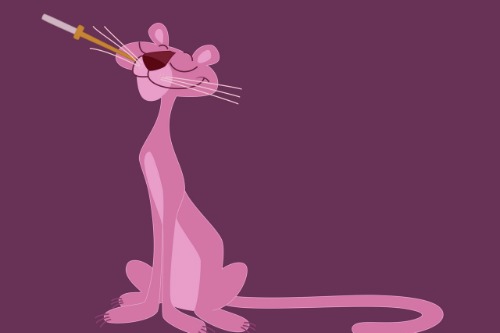
Once a leading figure in animated shorts, The Pink Panther gradually faded from mainstream American television in the 1990s. Initially beloved for his quirky antics and suave attitude, the character was eventually overshadowed by more modern, high-energy cartoons. Part of this erasure can be attributed to the character’s lack of spoken dialogue, which, while unique, made it harder for him to connect with newer, more dialogue-heavy animation. As children’s TV began to prioritize fast-paced, character-driven plots, The Pink Panther’s silent slapstick comedy became less in tune with the evolving tastes of the audience.
In addition, the rise of more vibrant, colorful, and tech-savvy animation meant that The Pink Panther’s minimalist approach was no longer as appealing to younger viewers. The character did make occasional appearances in special programming, but these were mostly for nostalgic purposes rather than fresh, ongoing content. The Pink Panther, while still iconic in his own right, slowly became a relic of the past in the face of more dynamic and interactive animated characters. His erasure from regular TV rotations reflects the ways in which animation has changed over time.
10. The Animaniacs’ Slappy Squirrel
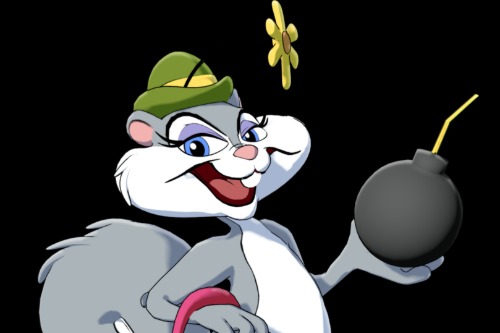
Slappy Squirrel, a beloved character from Animaniacs, was once a staple of the show with her sharp wit and old-school showbiz attitude. However, in the 1990s, her character was reduced significantly in the show’s later seasons and was entirely absent in the 2020 reboot. Slappy was intended as a parody of older Hollywood veterans, but her humor, which often skewed toward the cynical and sarcastic, was less appealing to a younger audience. Over time, as Animaniacs pivoted toward more contemporary, pop culture-driven humor, Slappy’s character seemed outdated.
Despite being a fan favorite for many, Slappy Squirrel was phased out due to changing audience tastes and an increasing focus on younger, more relatable characters. In the reboot, Animaniacs took a more modern approach, incorporating social media references and current trends. Slappy’s humor, rooted in classic animation, didn’t quite fit into this new world. Her disappearance serves as a reflection of how Animaniacs had to evolve to stay relevant while leaving some older characters behind.
11. Trix Rabbit
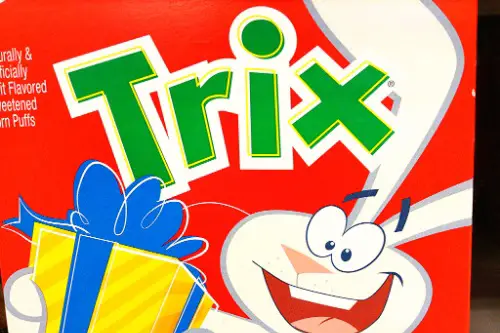
The Trix Rabbit, an iconic mascot for Trix cereal, has been a mainstay in American advertising for decades. But for a period, the character was largely absent from TV shows and commercials, especially during the rise of health-conscious advertising. The Trix Rabbit was originally depicted as a fun, mischievous character trying to get his hands on the cereal, but the changing focus toward healthier foods and less sugary cereals pushed him out of mainstream media. Trix had to take a backseat in favor of ads that better aligned with the new nutritional guidelines and trends.
In addition, as public awareness around marketing to children grew, Trix’s image, as a character designed to appeal specifically to kids, became less effective. With the rise of social media and more diverse forms of entertainment, the Trix Rabbit was gradually erased from TV screens. His absence from modern advertising campaigns is a testament to how children’s media and marketing have adapted to new concerns about health, childhood obesity, and consumerism. While still recognized, the Trix Rabbit’s role in TV and advertising has significantly diminished over the years.
12. The Raccoons’ Cyril Sneer
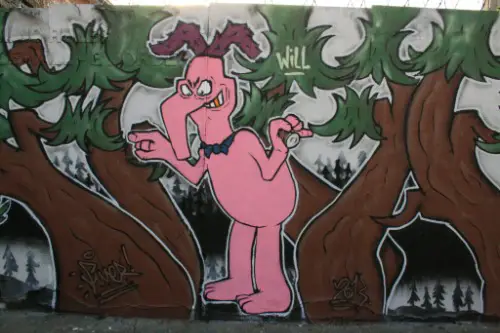
Cyril Sneer, the greedy antagonist from The Raccoons, was a beloved character in the 1980s Canadian animated series. However, as the years went on and children’s television moved toward lighter, more wholesome content, Cyril’s character became less relevant. His constant scheming and villainous traits, which worked in the earlier episodes, were seen as too intense for younger audiences in later years. This shift was part of a broader trend of toning down characters who were seen as too mean-spirited or dark.
In addition, The Raccoons itself became less popular, and with it, Cyril Sneer’s role in animated television faded into obscurity. His portrayal as a capitalist villain was in direct contrast to more modern animated series, where villains were often given more complex backstories or made less overtly malicious. This change in tone meant that Cyril’s straightforward greed didn’t fit with the evolving standards of children’s animation. His erasure reflected the broader push toward less antagonistic portrayals in TV cartoons.
13. Looney Tunes’ Porky Pig’s Overuse of “That’s All Folks!”
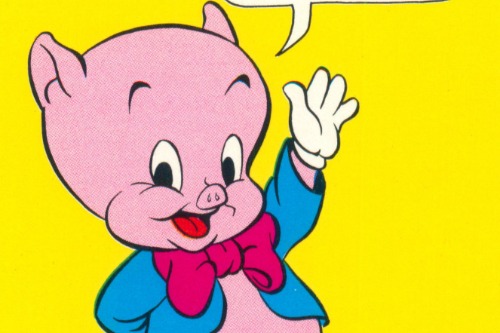
Porky Pig, famous for his stuttering and his iconic closing line, “That’s all folks,” was a mainstay of the Looney Tunes franchise. Over time, however, the line became less central, and some episodes began to phase it out entirely. The overuse of this catchphrase became a symbol of the series’ repetitive structure, and as Looney Tunes evolved, there was a push to update the characters and their dialogue. Though still a classic moment, the line was seen as a relic of the past.
By the time the 1990s rolled around, the over-reliance on this closing phrase was deemed outdated, and the character was often seen without it in newer adaptations. Audiences grew used to more dynamic forms of comedy, which required more versatile character arcs than just a repetitive phrase. While Looney Tunes continued to thrive, Porky’s iconic catchphrase became less important in favor of more innovative storytelling techniques. His evolving role reflects how entertainment has changed to accommodate shifting audience expectations.
14. Elmyra Duff (from Tiny Toon Adventures)
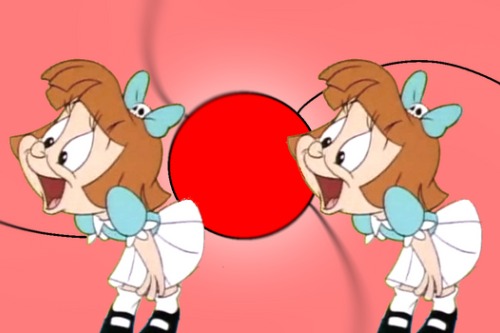
Elmyra Duff, the overzealous animal lover from Tiny Toon Adventures, was once a prominent character who flipped the “animal tormentor” trope on its head. Her affection was so intense it bordered on dangerous, often smothering her pets with love to the point of chaos. Initially intended as a comedic take on characters like Elmira Gulch from The Wizard of Oz, Elmyra’s role was big enough to earn her a spinoff in Pinky, Elmyra & the Brain. But over time, the line between “funny” and “disturbing” got blurrier.
As children’s programming began focusing more on kindness and emotional intelligence, Elmyra’s humor started to feel off-tone. Her smothering personality wasn’t just outdated—it was at odds with evolving ideas about pet care and empathy. As a result, she quietly vanished from newer Looney Tunes-related content and hasn’t returned in any significant reboot. Her disappearance reflects the shift away from exaggerated slapstick toward more thoughtful, child-friendly humor.
15. Snagglepuss
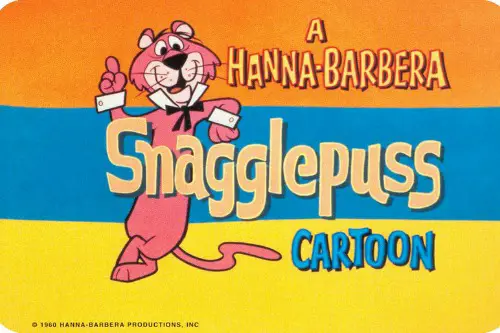
Snagglepuss, the pink, dandy lion from Hanna-Barbera’s classic lineup, was once a regular on Saturday morning TV. Known for his theatrical delivery and catchphrases like “Heavens to Murgatroyd!” he embodied camp and flamboyance in a way that flew under the radar for decades. But as discussions around LGBTQ+ representation became more open and intentional, Snagglepuss found himself caught in an awkward middle ground. His coded traits started to feel like relics of a time when queerness was played for laughs or hidden behind ambiguity.
Hanna-Barbera never confirmed his identity, which led to growing discomfort around using him without either evolving or clarifying the character. Though he was reimagined in a critically acclaimed comic book as a closeted playwright, that version never made it to mainstream TV. As animation moved toward more authentic and respectful representation, Snagglepuss was left behind. Today, he remains mostly absent from current programming, his flamboyance remembered more than celebrated.
16. Fifi La Fume (from Tiny Toon Adventures)
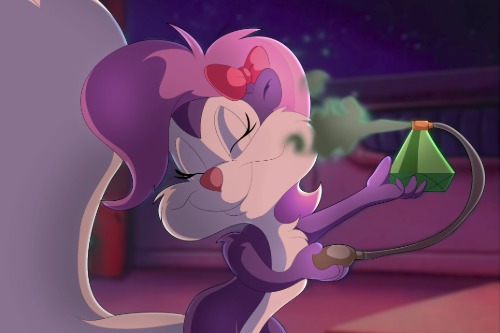
Fifi La Fume, a skunk character from Tiny Toon Adventures, was designed as a female counterpart to Pepe Le Pew—with similar romantic persistence, but from a different angle. She often pursued male characters with overwhelming enthusiasm, flipping the gender roles in a way that seemed novel in the early ’90s. But much like Pepe, Fifi’s brand of relentless affection hasn’t aged well. Her over-the-top pursuit of love is now viewed as problematic rather than funny.
As audiences became more sensitive to how obsession and consent are portrayed, Fifi disappeared from Tiny Toon spin-offs and reboots. The humor surrounding her was no longer seen as innocent slapstick—it raised red flags in a modern context. While she was once considered a standout for her assertiveness and exaggerated charm, newer shows opted to leave her out entirely. Her quiet removal speaks to how quickly once-acceptable tropes can fall out of favor.
17. Fat Albert
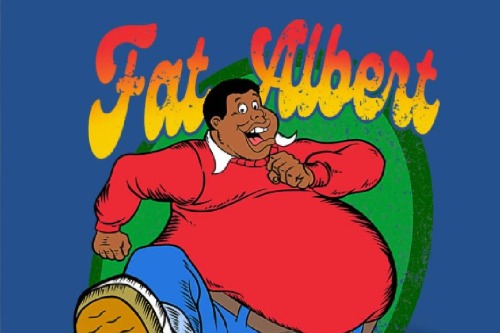
Fat Albert and the Cosby Kids was a groundbreaking show in the 1970s for featuring a predominantly Black cast and tackling serious social issues. Fat Albert himself was a positive, big-hearted role model who used humor and music to teach life lessons. But despite its original impact, the show—and its main character—has virtually vanished from syndication and streaming platforms. This disappearance is partly due to changing tastes, but mostly tied to the legacy of Bill Cosby.
With Cosby’s name inseparable from the series, networks distanced themselves from the content in light of his criminal convictions. Fat Albert as a character became collateral damage, with his reputation tainted despite his otherwise wholesome message. It’s a rare case where a character’s erasure wasn’t about their own actions, but about the creator behind them. As of now, there are no public plans to revive the character in a way that could separate him from the controversy.
18. Caveman from Captain Caveman and the Teen Angels
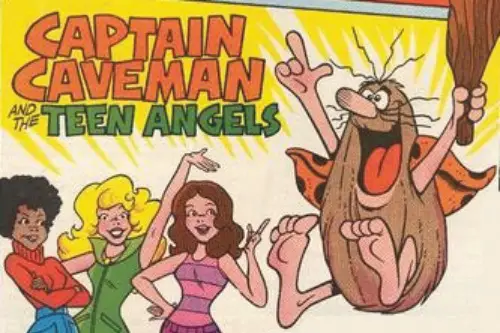
Captain Caveman, the club-wielding hero with a battle cry of “Captain CAAAAAVEMAAAAAN!” was a familiar face on late-’70s and early-’80s cartoons. A parody of superhero and detective tropes, he often played the bumbling brute who accidentally saved the day. While his grunts and growls were once seen as harmless comedy, the caveman trope began to feel outdated and culturally insensitive. The character embodied a stereotype of primitive behavior that no longer fit comfortably in modern kids’ programming.
The “dumb brute” archetype also lost popularity as animation shifted toward smarter, emotionally aware storytelling. Though Captain Caveman has popped up in cameos, like in Scoob!, his presence is more nostalgia bait than a serious revival. Networks are more cautious about characters that rely on exaggerated speech patterns or questionable depictions of evolution and human history. As a result, Captain Caveman has become another relic of a different era in cartoon history.
19. Monterey Jack (from Chip ‘n Dale: Rescue Rangers)
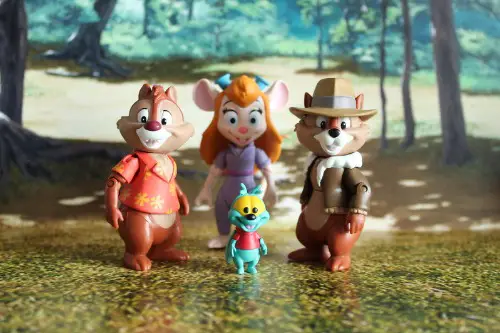
Monterey Jack, the cheese-loving Aussie from Chip ‘n Dale: Rescue Rangers, was once a fan favorite for his adventurous spirit and booming laugh. But over time, his intense cheese addiction became less of a running gag and more of a dated, one-note joke. He was portrayed as uncontrollably addicted to cheese, often entering wild, trance-like states at the mere mention of it. While funny to ’80s and ’90s audiences, modern portrayals of addiction—especially in children’s media—are approached with more nuance.
In the 2022 Rescue Rangers movie, Monterey Jack is referenced, but his original role is dramatically reduced. He’s treated more as a nostalgic Easter egg than a returning cast member, and his cheese addiction is reframed more critically. The quiet phasing out of Monterey Jack reflects a broader move away from using compulsive behaviors as comic relief. Today’s audiences expect even side characters to be more than punchlines, which left Monterey stuck in the past.
This post 19 Cartoon Characters That Were Quietly Erased From American TV was first published on American Charm.


